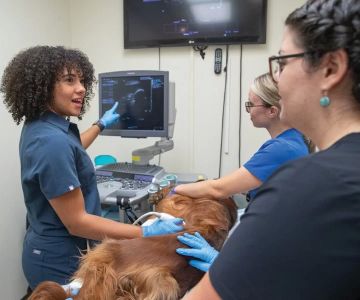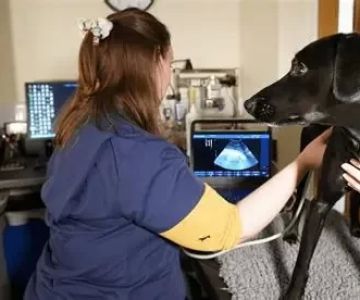Is It Possible to Take Online Classes to Become a Veterinarian?
- 1-Overview-Of-Veterinary-Education
- 2-Online-Classes-Availability-And-Structure
- 3-Advantages-Of-Online-Veterinary-Courses
- 4-Limitations-And-Challenges-Of-Online-Training
- 5-Real-Life-Examples-And-Student-Experiences
- 6-How-To-Choose-The-Right-Online-Veterinary-Program
- 7-Taking-The-Next-Step-In-Veterinary-Education
1. Overview of Veterinary Education
Becoming a veterinarian requires extensive education, training, and hands-on experience. Traditionally, veterinary education involves completing a bachelor’s degree followed by enrollment in a Doctor of Veterinary Medicine (DVM) program at an accredited veterinary school. These programs combine classroom learning, lab work, and clinical rotations to prepare students for the practical demands of animal care.
The question “can you take online classes to become a veterinarian” arises as more education moves to digital platforms. While some coursework can be delivered online, the profession’s hands-on nature poses unique challenges for fully remote study.
2. Online Classes Availability and Structure
Currently, no accredited veterinary schools offer a complete DVM degree entirely online, due to the critical need for in-person clinical experience and animal handling. However, many institutions provide online prerequisite courses or related degrees, such as animal science or pre-veterinary studies, that prepare students for vet school.
Some programs blend online theoretical classes with in-person labs and clinical practicums. This hybrid model offers flexibility while ensuring essential practical skills are mastered. For example, courses on animal anatomy, physiology, or pathology may be available online, while animal handling and diagnostics require face-to-face instruction.
In addition, continuing education and specialization courses for practicing veterinarians often come in online formats, providing professionals with flexible options to expand their knowledge.
3. Advantages of Online Veterinary Courses
Online courses can offer significant benefits, especially for students balancing work, family, or remote living situations. Accessing veterinary coursework online reduces commuting time and can lower overall educational costs.
Moreover, technology-enhanced learning tools such as virtual labs, 3D modeling, and interactive simulations make it easier for students to grasp complex concepts from anywhere. This approach also allows for self-paced study, which can help accommodate diverse learning styles.
For instance, a student from a rural area might access specialized veterinary science courses through online platforms, gaining knowledge previously unavailable locally. This accessibility promotes broader participation in veterinary education.
4. Limitations and Challenges of Online Training
Despite its advantages, online veterinary education faces major limitations. The inability to gain direct hands-on experience with animals is a significant barrier, as practical skills are essential in veterinary medicine.
Clinical rotations, internships, and face-to-face mentorships are critical for developing competence in diagnosis, surgery, and patient care. These components cannot be fully replicated through online courses. Additionally, some accrediting bodies currently do not recognize fully online DVM degrees.
Furthermore, learning veterinary medicine involves teamwork and collaboration, which may be harder to foster in a purely virtual environment. Students must also stay motivated and disciplined without the structure of in-person classes.
5. Real-Life Examples and Student Experiences
Several students have shared their journeys combining online coursework with on-campus clinical training. For example, Emma, a veterinary student, completed her prerequisite biology and chemistry courses online while working part-time. This flexibility allowed her to afford tuition and focus on hands-on training during clinical semesters.
Another story involves Jason, who lives internationally and took advantage of hybrid veterinary programs offering remote lectures and in-person practicums during summer intensives. His experience highlights how blended learning can expand access without compromising essential skills.
These examples illustrate that while fully online veterinary degrees are not yet available, integrating online classes into veterinary education is a practical, growing trend.
6. How to Choose the Right Online Veterinary Program
Selecting the right program is vital for educational success. Prospective students should verify accreditation, curriculum quality, and the balance between online and hands-on components. Research faculty credentials and available student support services, such as tutoring and career counseling.
Additionally, look for programs that provide clear pathways to complete clinical requirements and assist with licensure preparation. Reviews from current and former students can offer insights into the program’s effectiveness.
Finally, consider technology requirements and your personal learning style to ensure a good fit with the program’s delivery methods.
7. Taking the Next Step in Veterinary Education
Understanding whether can you take online classes to become a veterinarian is just the beginning. As online education evolves, it offers exciting opportunities for flexible and accessible learning paths in veterinary medicine.
If you’re ready to explore veterinary programs that combine online theory with essential practical training, resources and expert guidance are available to help you find the best fit. Investing in quality educational tools and support services can make all the difference in achieving your dream of becoming a veterinarian.
For those seeking recommended courses, study aids, or expert advice, exploring trusted platforms and institutions will empower you to advance confidently in your veterinary career journey.











